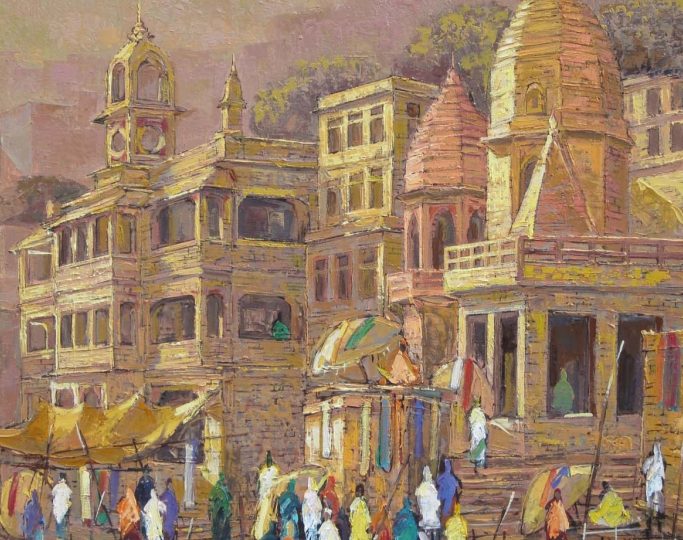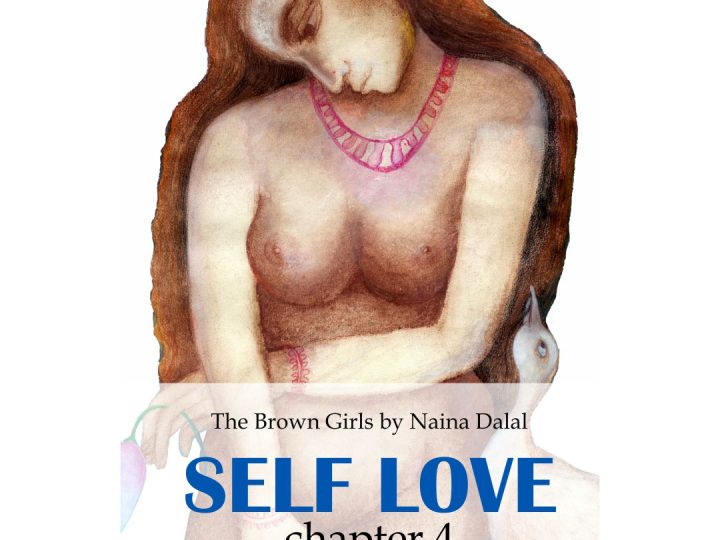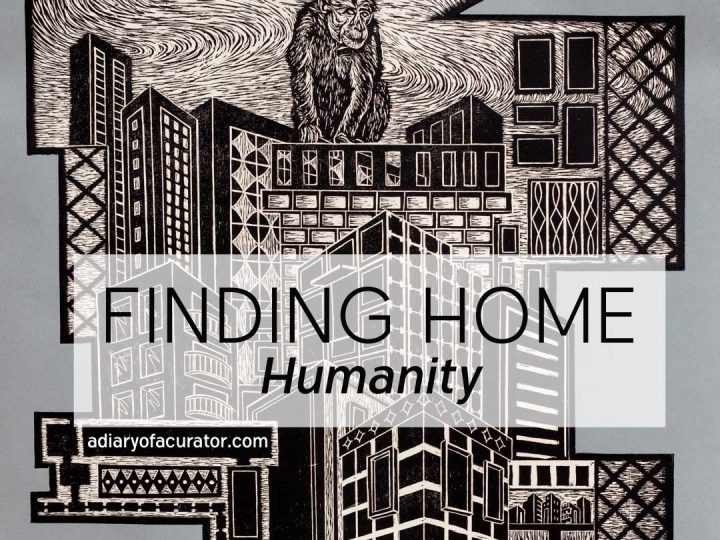
Namaste, I am Gauraiyā (sparrow). I am here to share an episode from my life with you on behalf of my friends in biodiversity residing in the natural ecosystem. I am not here to demonstrate my protest against humanity. We do not have that option with us.
I lost my parents at the time of my birth. Now, I am living with you all. Before I start, I would like to thank Annu Gupta, whom I fondly call Annu didi, for showcasing our perspective in her works. She has been our voice for over a decade now. I am grateful to her for selecting me as the icon of natural ecosystem and biodiversity.
It was a Sunday summer afternoon, I was sitting on the balcony grill on the 4th floor of a building trying to settle by fixing my grip on a hot iron rod. Usually, I try to sneak in a cooler place to live in amidst the scorching sun. Sharma’s, the owner’s, a family of four were sitting inside the airconditioned room, watching a movie. It was the famous Wall Street starring Micheal Douglas as Gordon Gekko. Looking at this family, I started missing my own. Suddenly, I came across the dialogue where he says Greed is Good. This dialogue stayed with me over a period wondering how can greed be good?
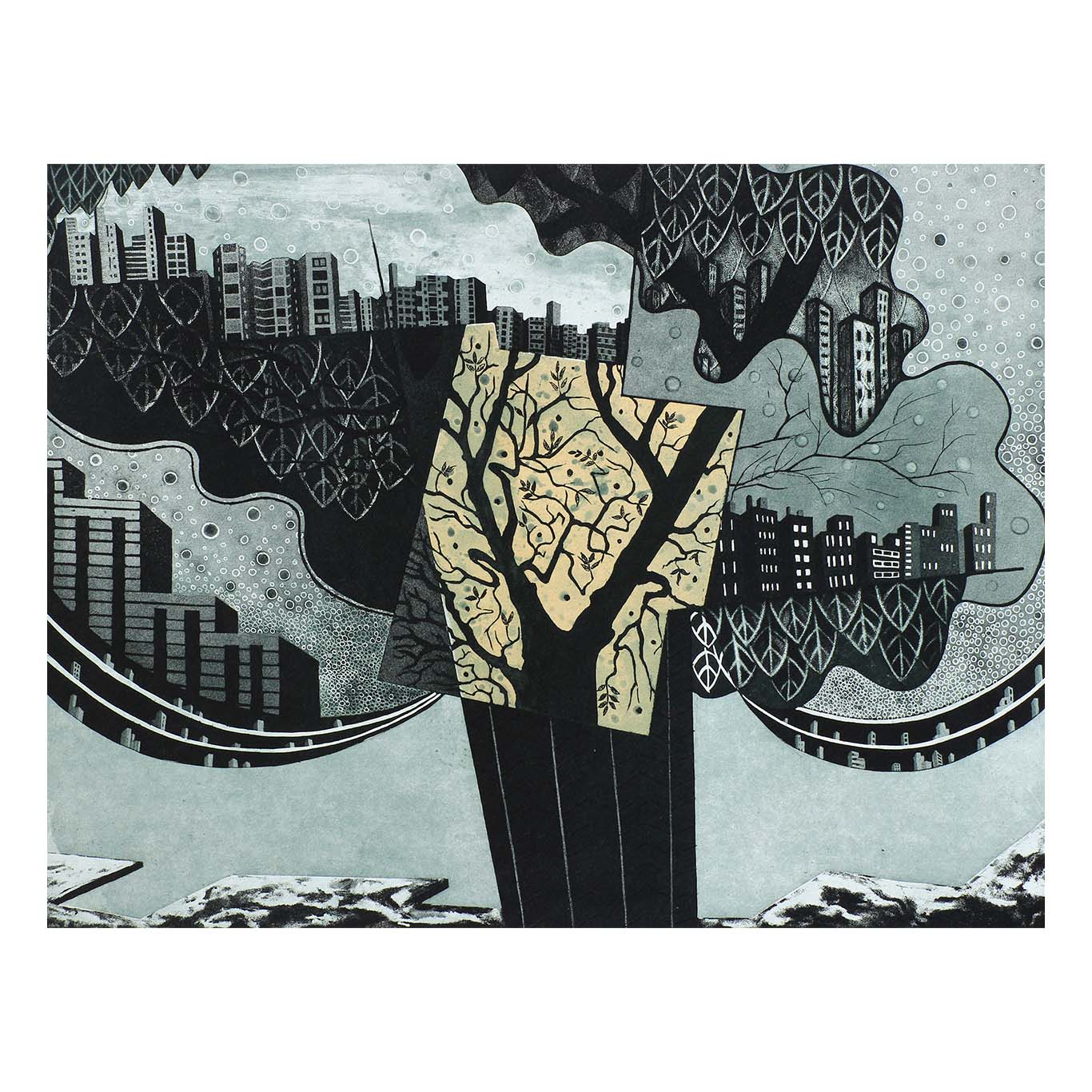

Days and nights passed. Seasons changed. Monsoon approached us. I got a chance to save myself and get inside a room. The children must have left the window open and to my fortune, I got saved from getting drenched. I flew inside and tried to find space to hide. Next to me was this book. Its pages were flipping because of the wind coming from that open window. This was some kind of a philosophy book. In the first line of the page read for Greed, all nature is too little by Seneca.
Isn’t it confusing? Whether greed is good or bad? In the evening, the owner of this beautiful house, Mr. Sharma, had invited his friend, Mr. Shah, for chai and pakoda. While they were discussing something, I heard the word Urbanization. Poor me, I didn’t knew anything about it. All I cared about at that point in time, was hiding indoors to protect myself from scary thundering and heavy rains.

The curiosity within me forced me to listen to their conversation. With chai in his hand, Sharma Ji, bent over to take some pakoda from the dish placed on the table. He continued the conversation on how the shift of human beings from rural to urban areas has impacted environmental, social, and economic changes. Without letting him complete his sentence, his friend Mr. Shah jumped in.
Shah: Sharma Ji, development is welcome. We need to progress. It is us, the humans, who have to decide the cost for it!
To live in an urban area, is also considered to be one of the parameters of success alongside the need of human beings with the increase in population. Nothing is wrong with that. Mr. Shah continued, you know Sharma Ji at times, the main man or woman of the house is compelled, in order to survive amongst the fittest. In all of this responsibility, we have forgotten humanity.
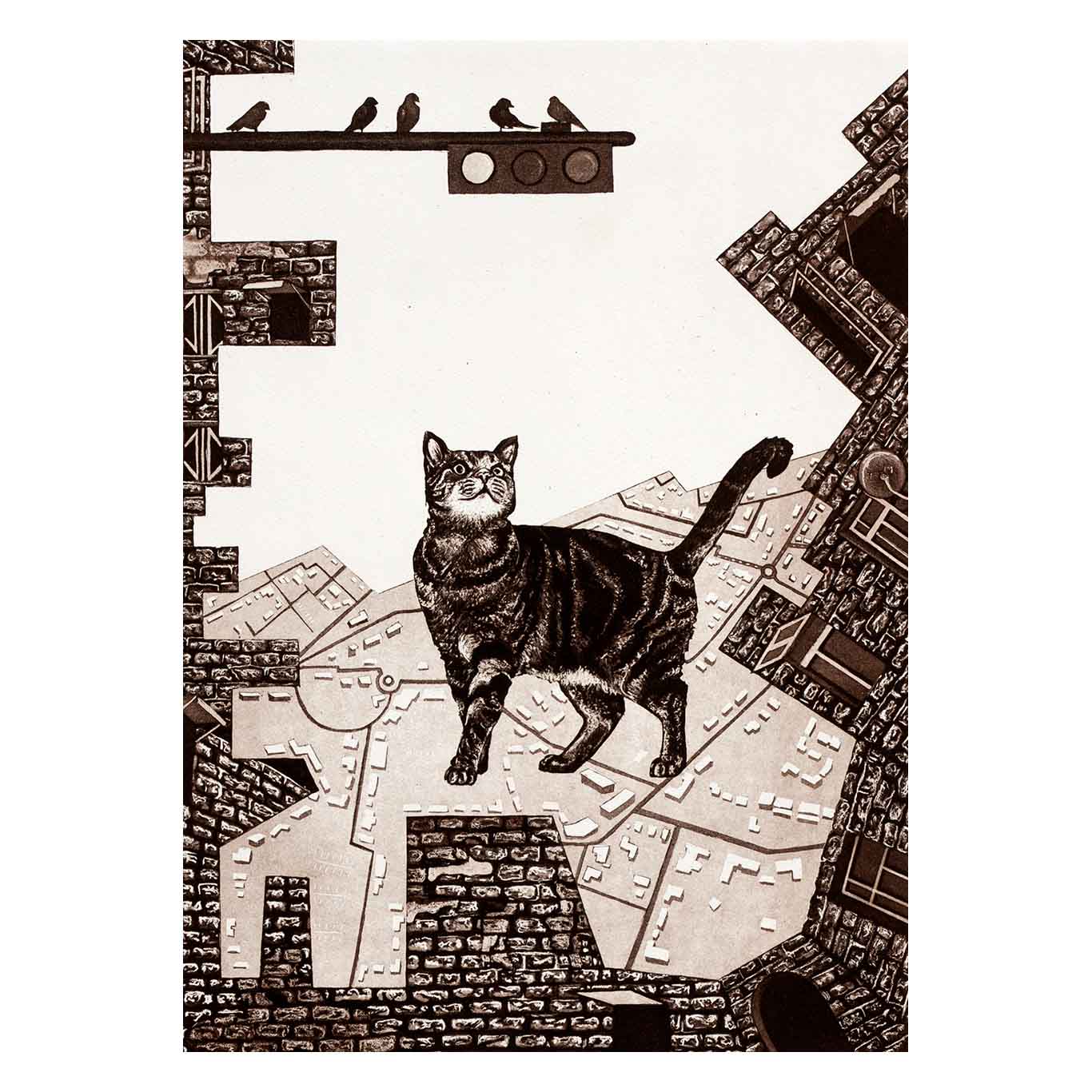
If we are given two minutes to write an essay on humanity, will we be able to write? Having said that, the sad part is, that every one of us is somehow, somewhere, trying to save ourselves from the criticism of society, community, family, and friends. When will we have time to consider the environment, urbanization, biodiversity, and natural ecosystem?
Sharma: If we start thinking about nature, we might have to sacrifice a lot of things, which may prove to be an obstacle to our success. At the same time, If we stop thinking about nature, we are on our way to contributing to urbanization and the imbalance that is harming the natural ecosystem around us.
While Sharma Ji and Shah Ji continued their discussion, me sitting in the background, wanted to tell my problems about bird-window strikes, the problems that we face with light and sound pollution, and the issues we, the natural ecosystem, and biodiversity face. How I wish I had the ability to speak in a language, that the greater species could understand.

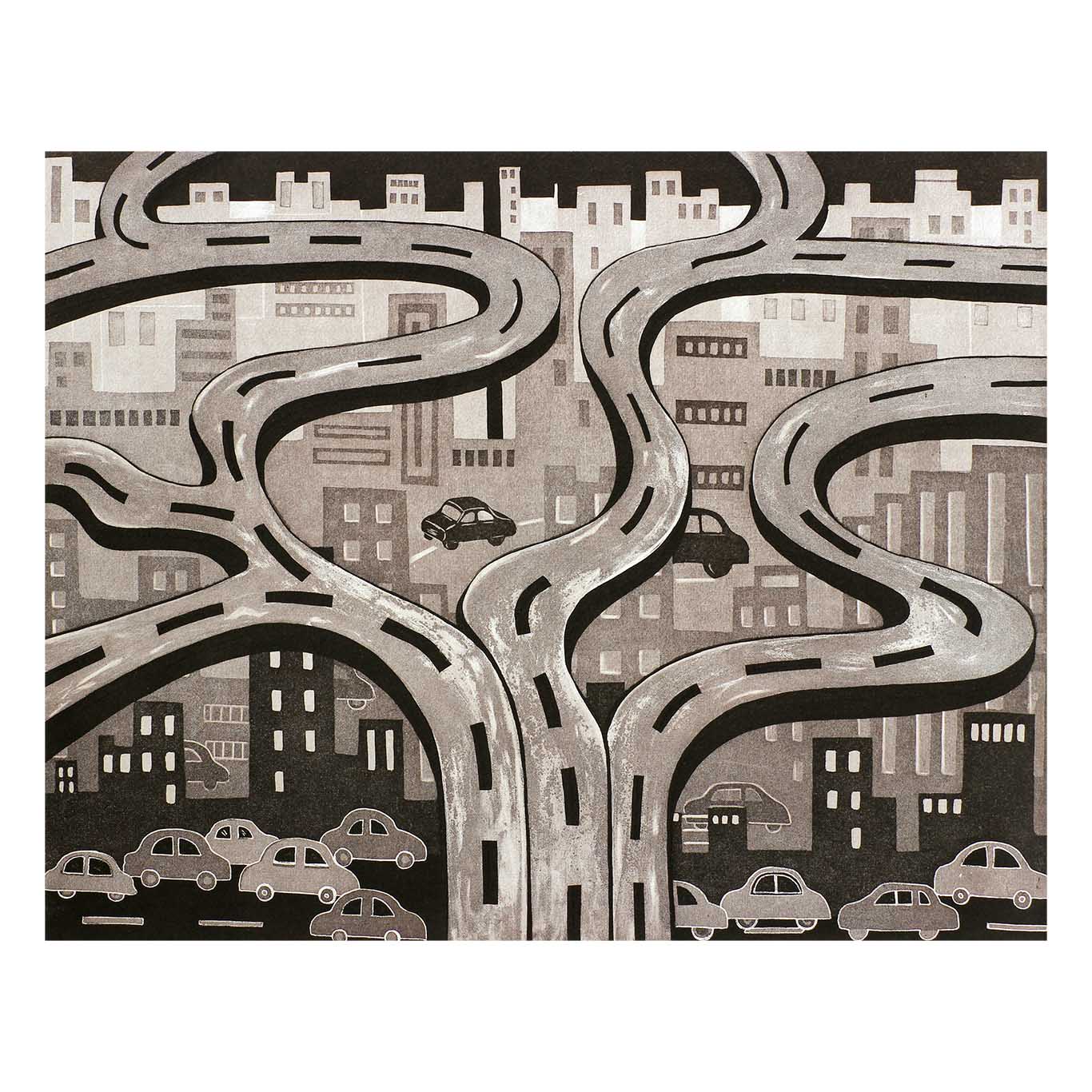
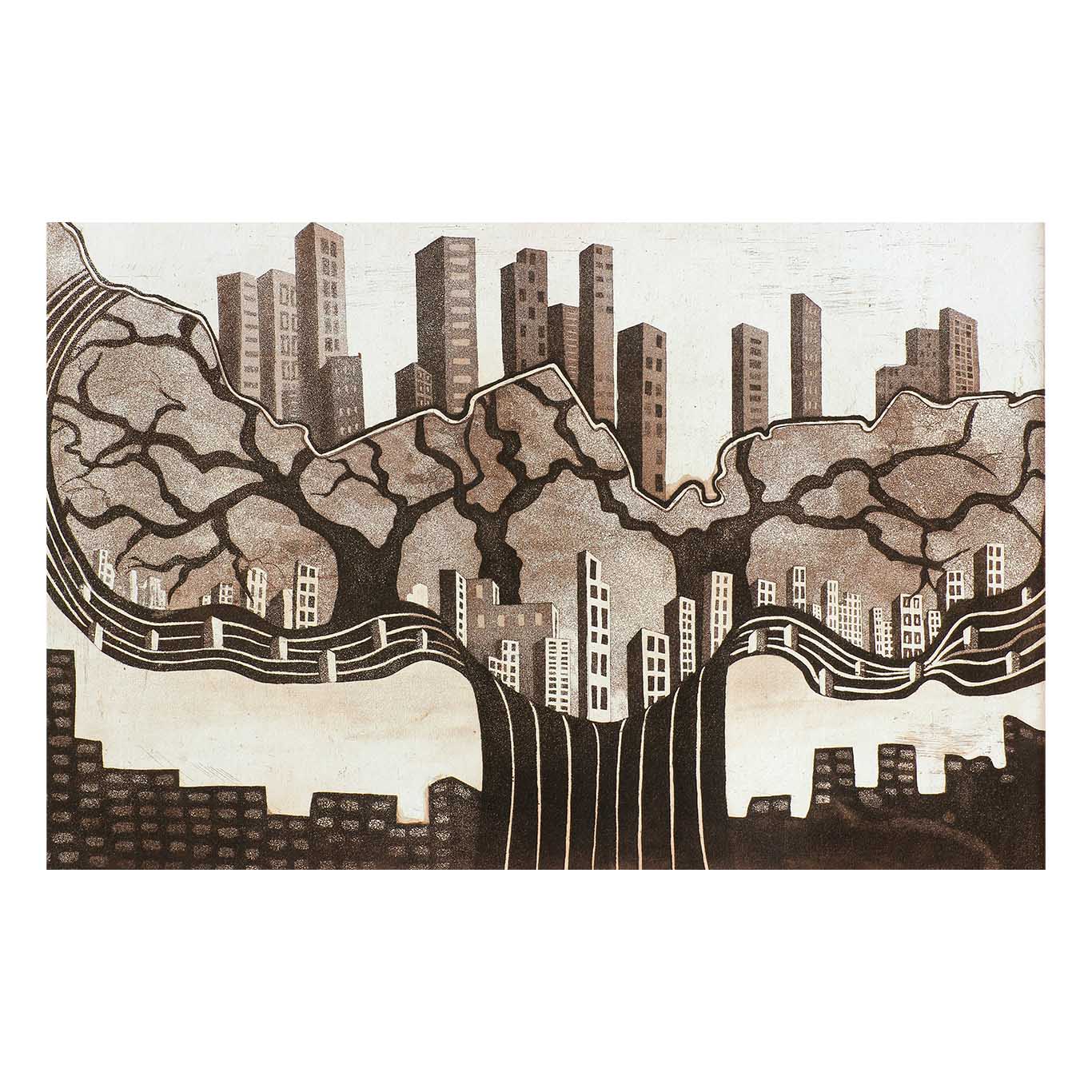
That thought lead me to recall Annu Didi’s work. I had the opportunity to live in her studio for a while. She was kind. Every day, didi use to place some food and water for us. I and my friends were made comfortable. I never knew what art is, but being a part of nature, I instantly connected with her work and always cherished her subject. It had us and that attracted me the most. While listening to Sharma Ji and Shah Ji, I could see all her artworks right in front of me. They were surreal, coming out of a SciFi movie where the flying cars are reality. The roads took place of the trees, and the growth of the population and development of cities is shown in the background. Her lyrical composition, and plain and simple buildings, reflected her simplicity as a person and as an artist.

I am in awe of her multi-dimensional narrative, though it is technically complex. Her symbolic elements are effective, there is something happening everywhere and at some places where nothing is happening, there is sensitive black. The black mass and white sharp lines and the left-out space illustrate the balance of urbanization and preserving a biodiverse natural ecosystem. The green and brown represents the harmony of nature and life around us. Sustainability is a three-dimensional perspective that is shown in her works through environment, economy, and society which is represented by the buildings, hoardings, and biodiversity. The most amusing part of her work is the 4th dimension which guides the way to humanity and spirituality.
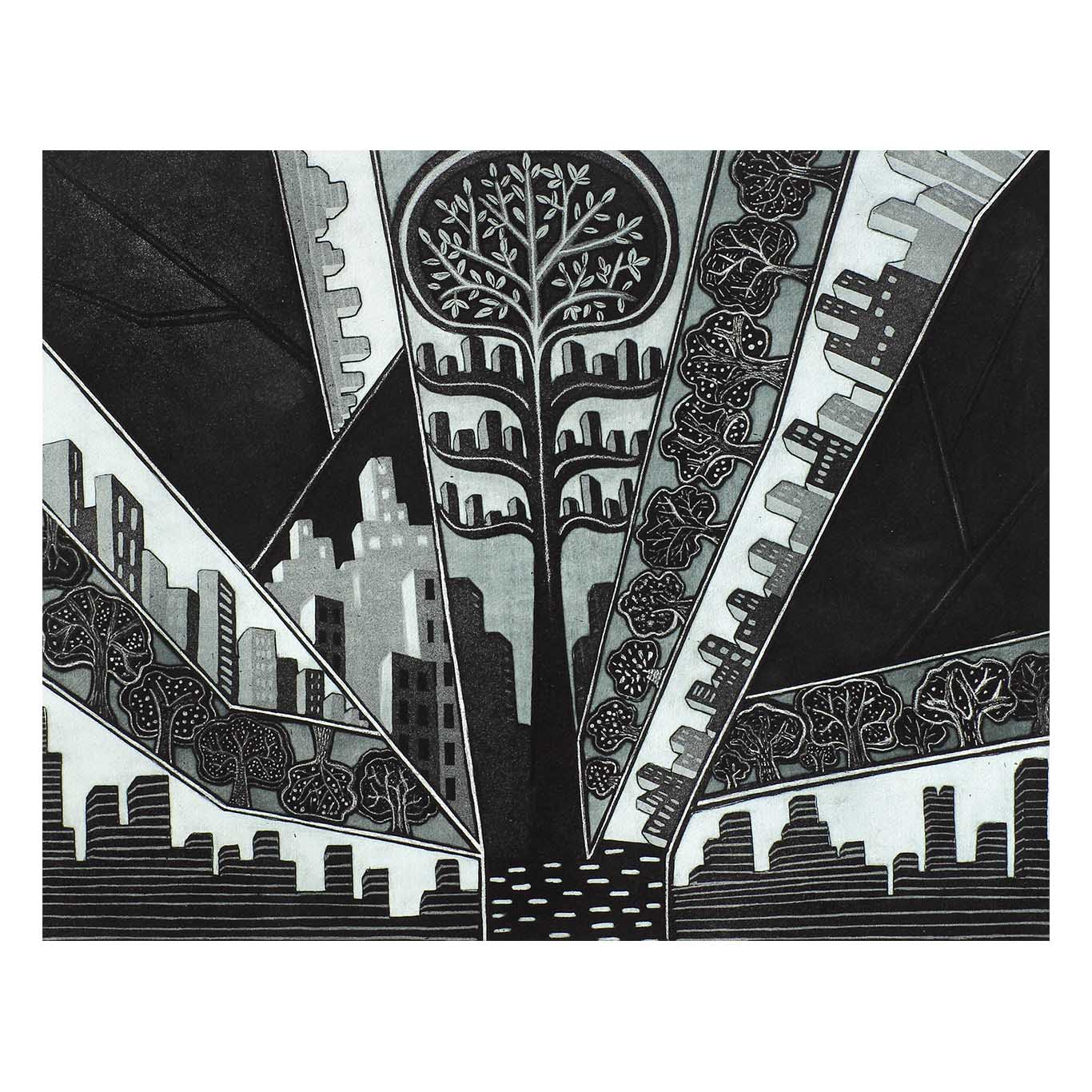
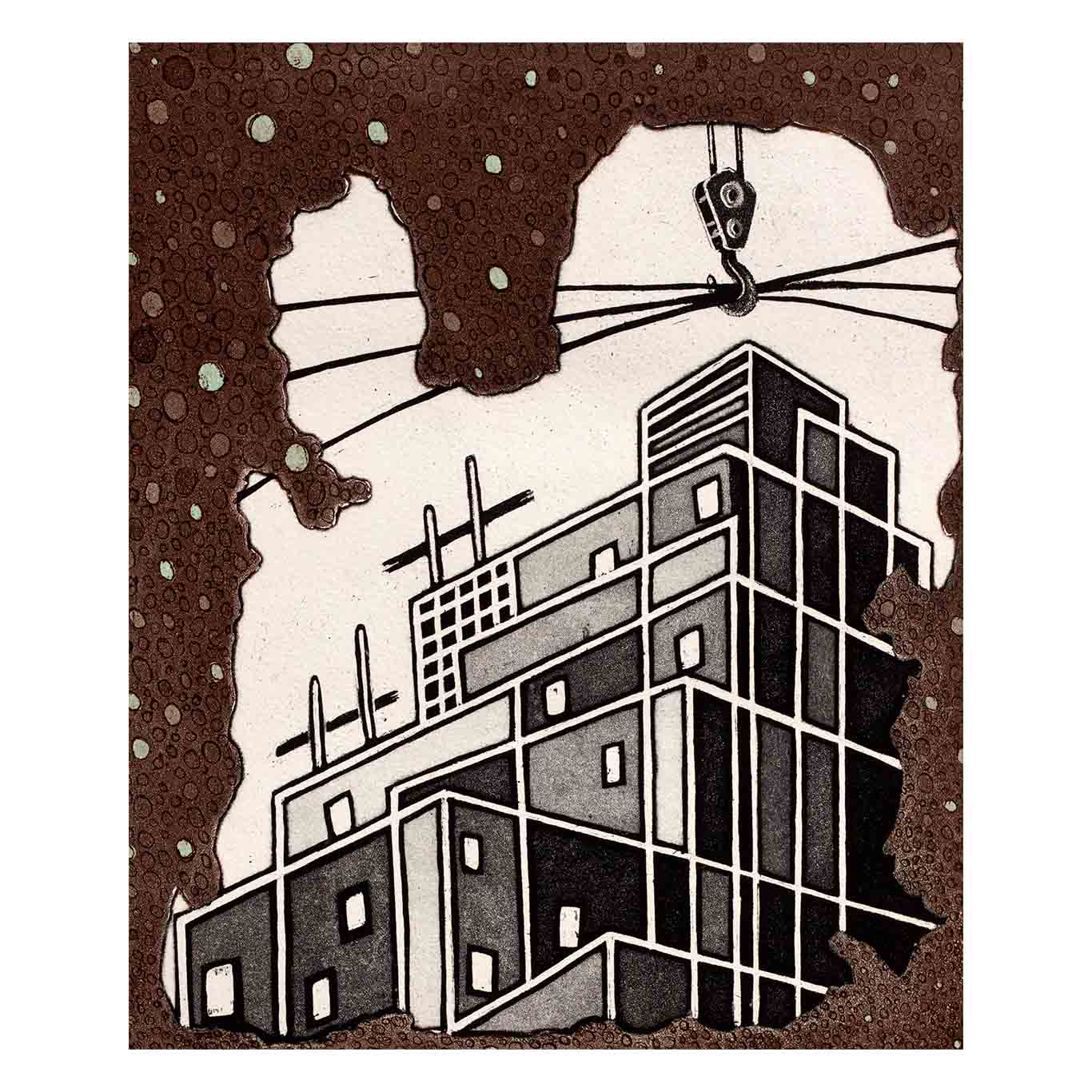
One day, a curator visited her studio. They were discussing various aspects of her works. All I could remember now from that conversation is how her lines have perspective, how beautifully she has interwoven the icons, elements, and forms into her composition, and how amazing her texture and colours are part of her narrative. Annu Didi’s printmaking is like a witness statement presented in a creative way. The curator further added how a realistic and surrealistic approach engrosses the viewer. Her compositional perspective binds the attention and gives the viewer a chance for a pragmatic view of the core concept she is trying to portray.
Whenever she used to print these etchings, a thought would occur in my mind. Any human being will get emotional while leaving his / her old house where they have created memories. No matter how bigger or better the new house is, they will feel homesick recalling their old house at least for some time. I want to tell them, at least, you have a home. We are always in a struggle, to find a HOME.
Photos and Text © Chaitya Dhanvi Shah



